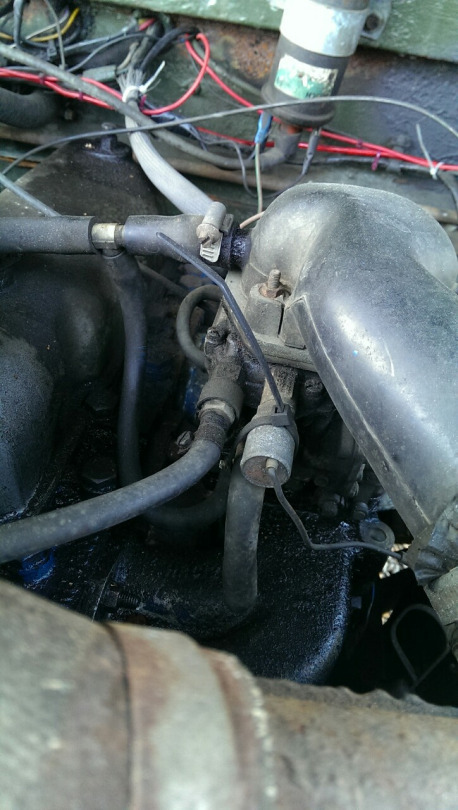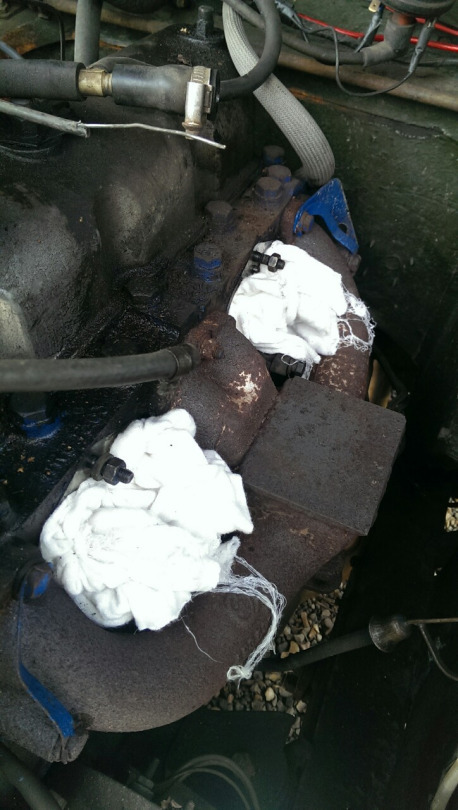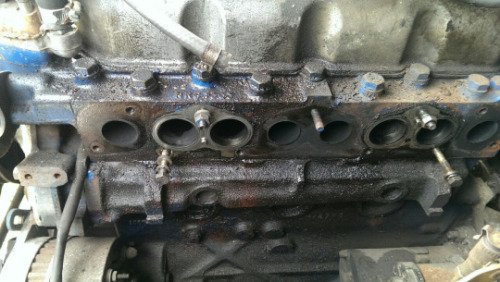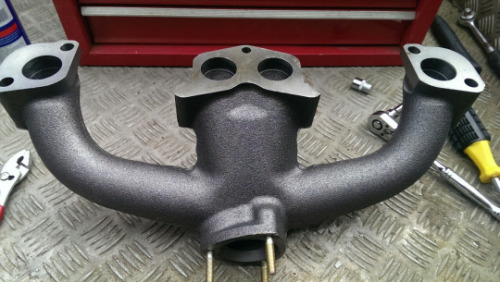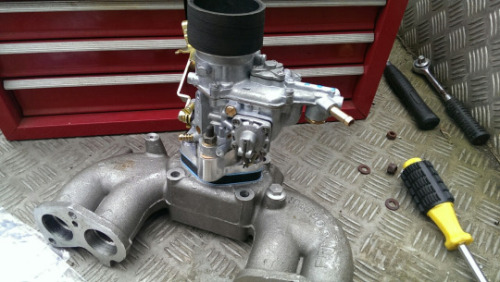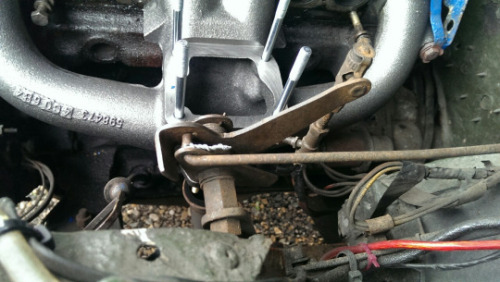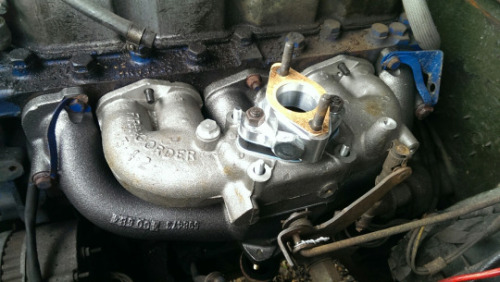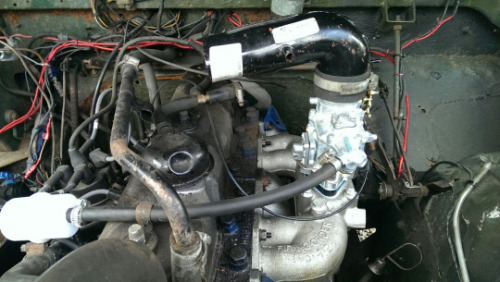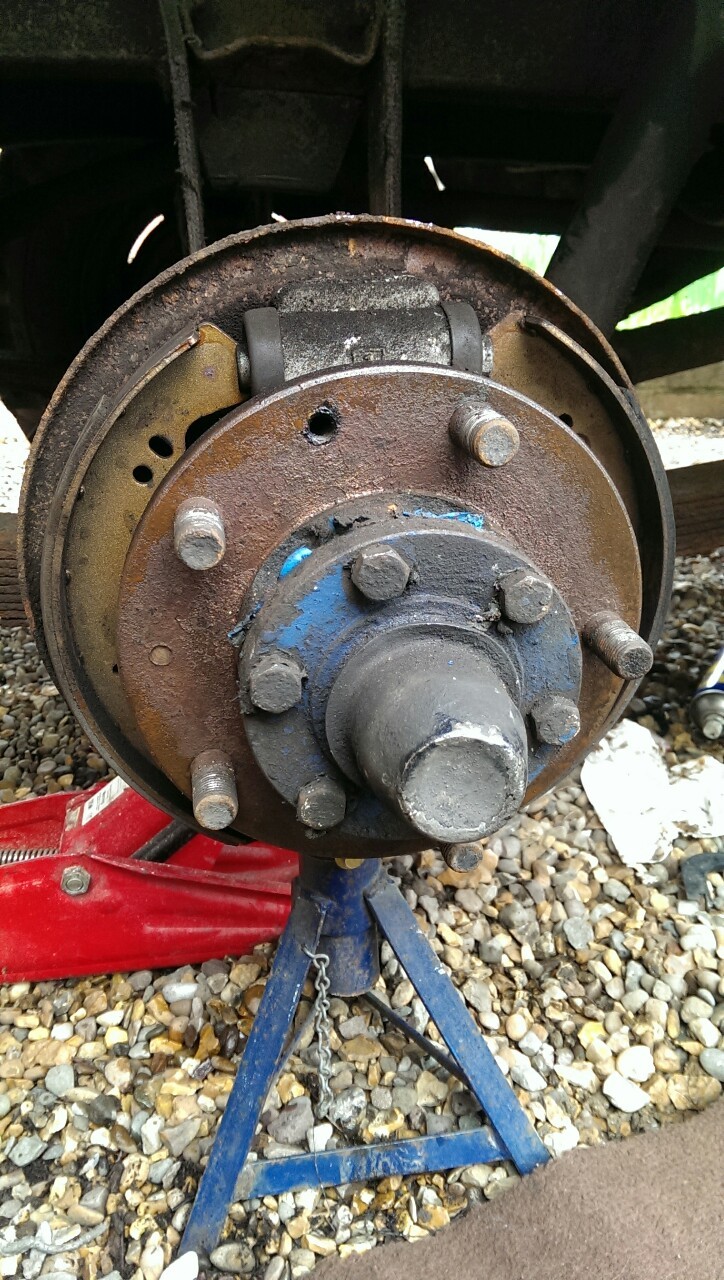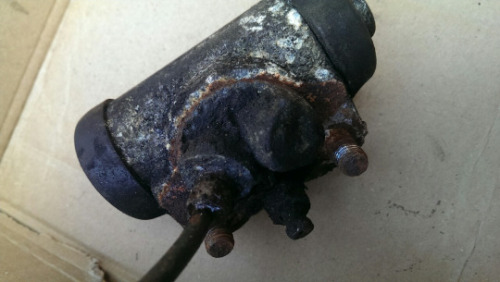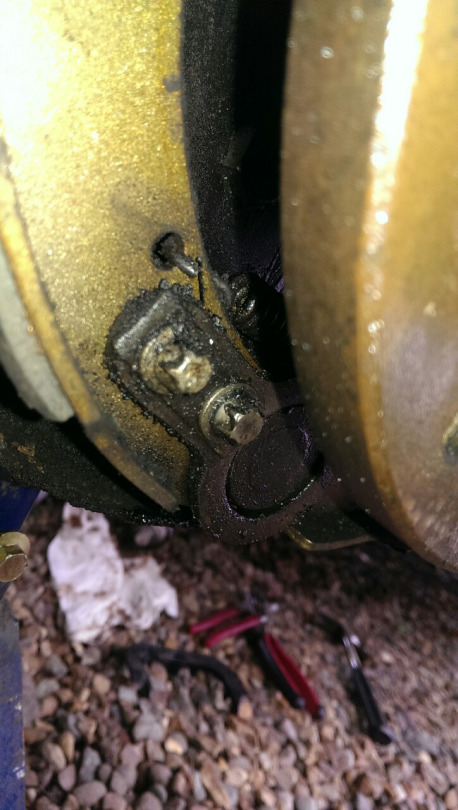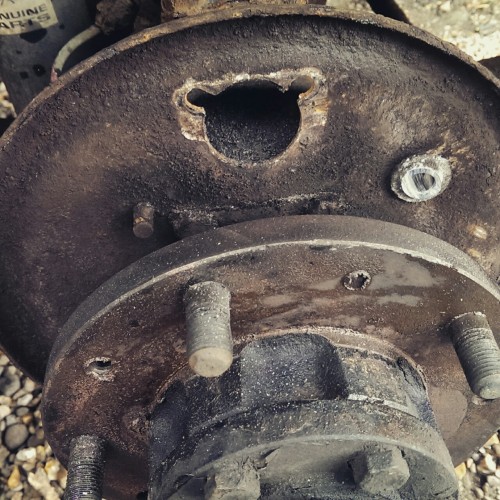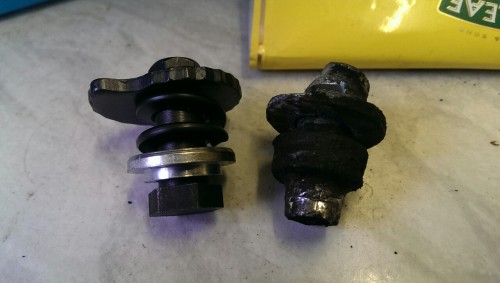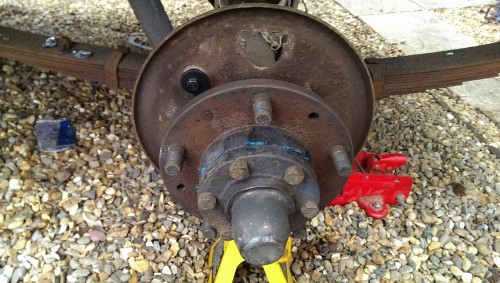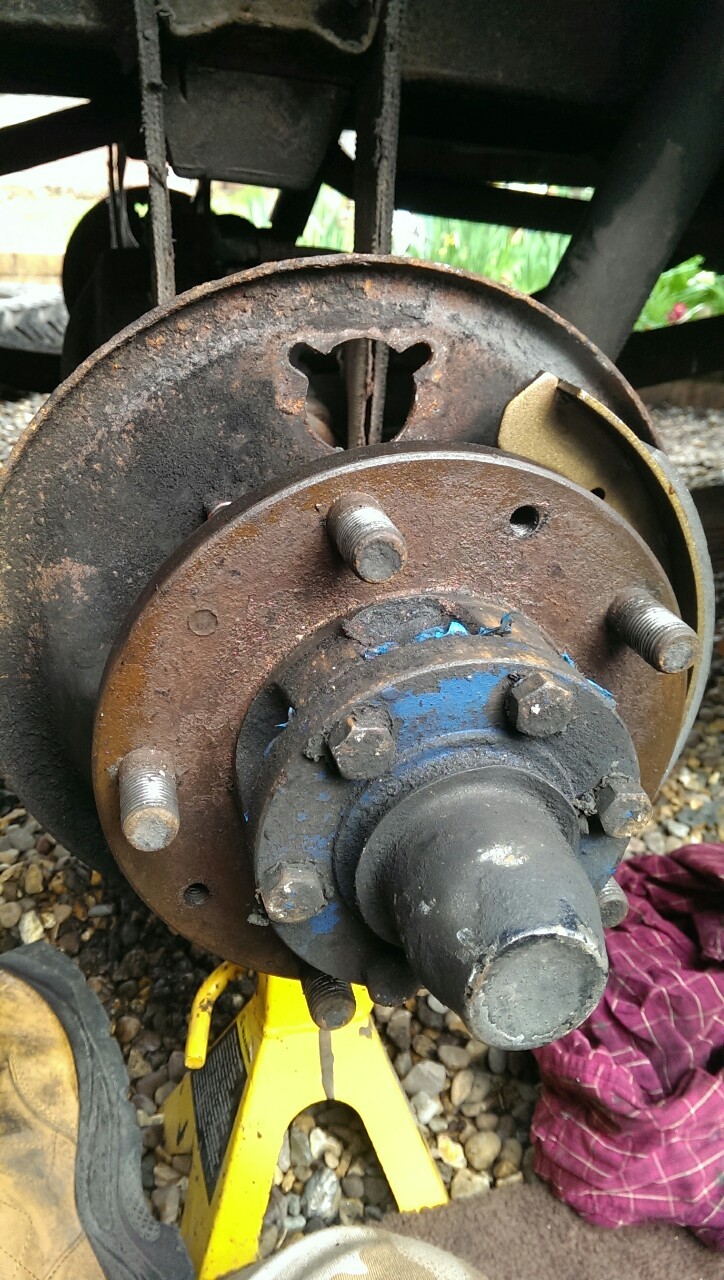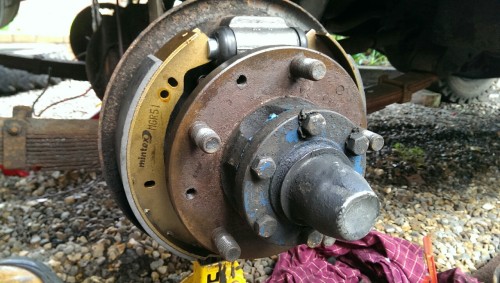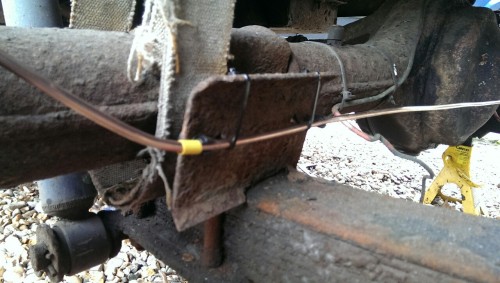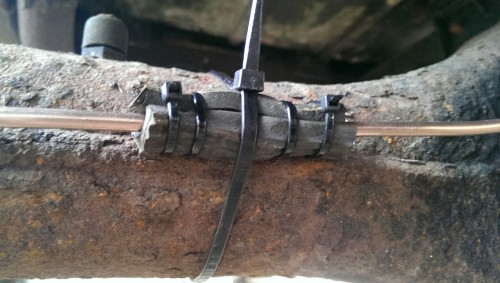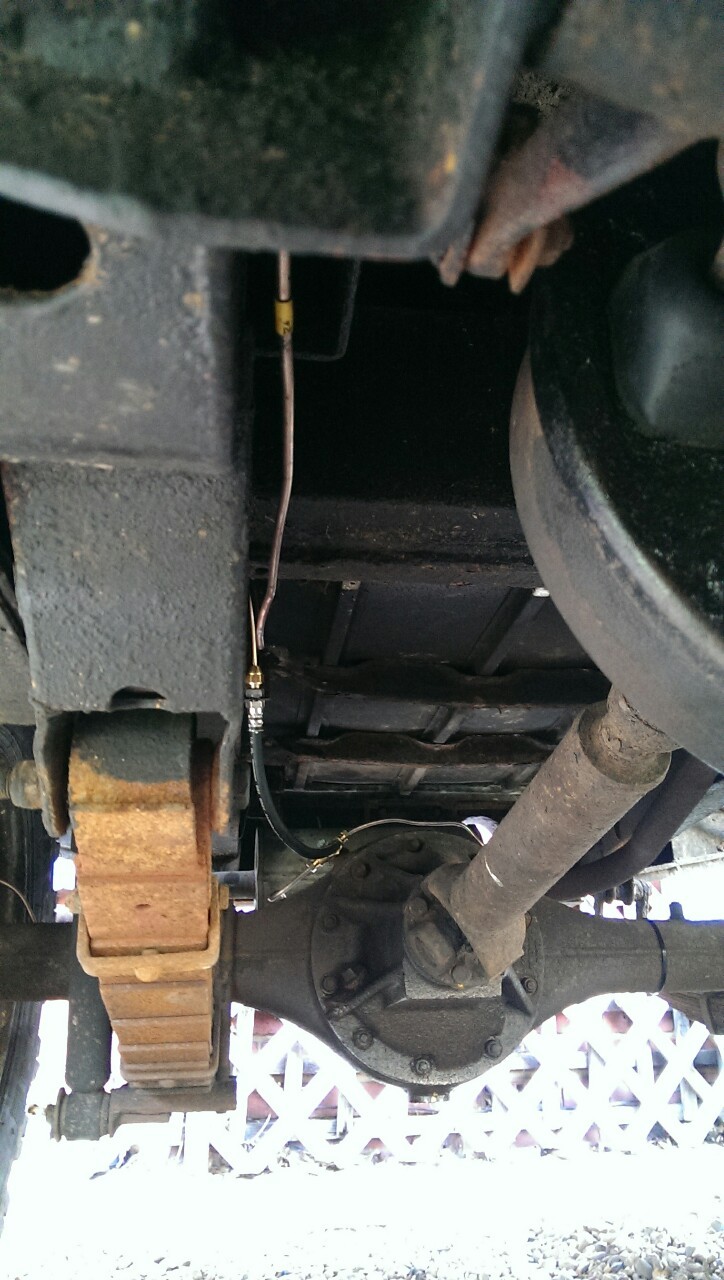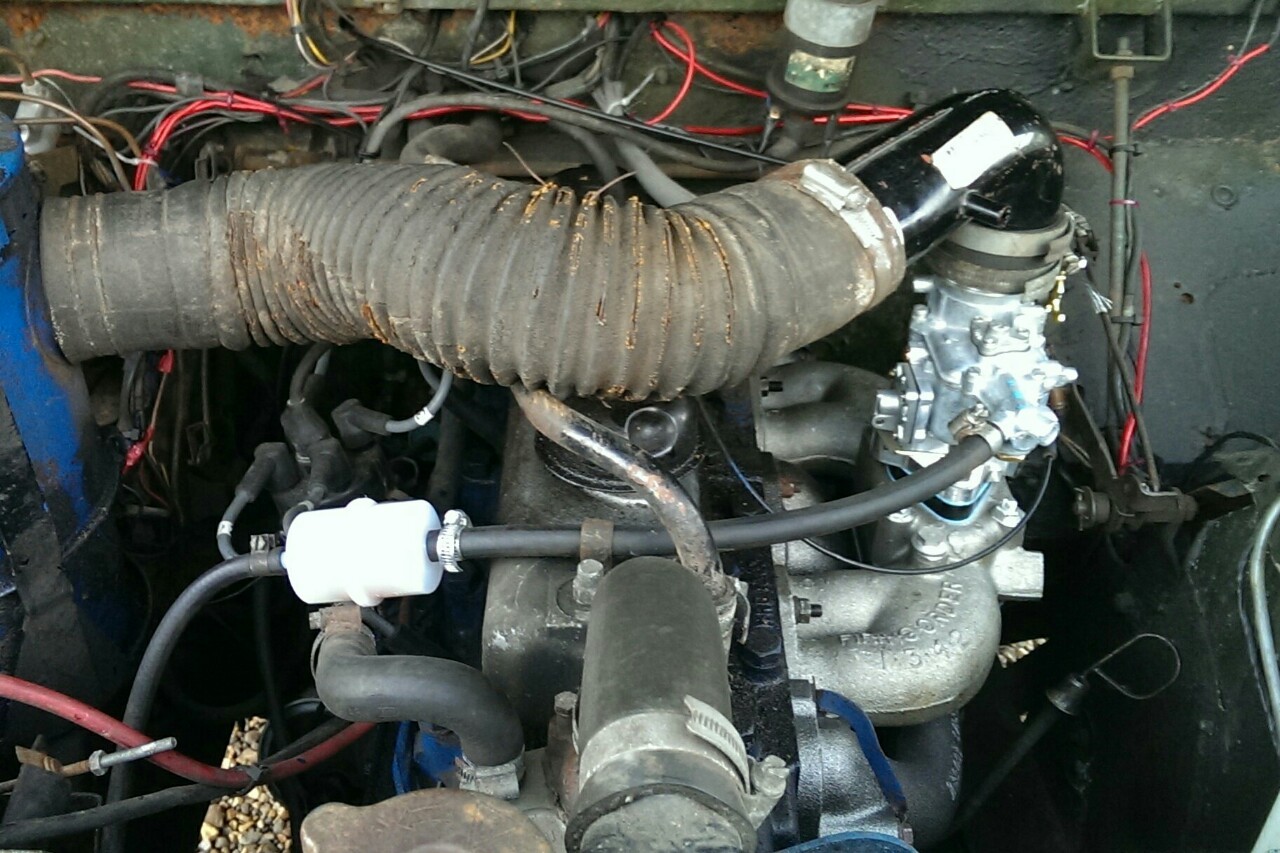Ahoy-hoy! As some of you may know already, before christmas the entire braking system of my Land Rover, Nero failed spectacularly on my way home one night leaving me with custom brown boxers and a brake pedal suffering from brewers droop. You may also remember the 'orrible looking hunk of rust that I had you all guessing at in a thread I started a little while back - http://forums.hexus.net/automotive/3...play-game.html
Thankfully the truck now has a completely new dual circuit braking system in place of the old, rotten and generally broken single circuit system that failed on me a few months back and having written up a piece detailing the rebuild for my blog I thought I'd post it up in here for anyone that's interested with a couple of additions/edits.
So, where do I begin?
For those of you that don't know, the original braking system sold as standard on any Landy produced before July 1980 was a single circuit system with 10" drums all round and no servo assistance. As far as stopping distances go by modern standards it is woeful and being single circuit is also prone to complete and total failure in the event that any single component breaks or malfunctions.
Not good really as I'm sure you can imagine so rather than refit a system I'd never trusted and would certainly never trust again I had two options - Find a front axle from a later vehicle and upgrade the front drums to 11" items as that would enable me to fit the later and arguably the best system, a dual circuit servo assisted system with bigger twin leading shoes in the front, OR fit the system that was available as an optional extra from the late sixties onwards and was standard on LHD exports which is a dual line servo assisted system that uses the existing single leading shoe 10" drums all round.
There are advantages and disadvantages to both. Twin leading shoes are great for stopping you in forward gears but not so good at stopping you in reverse, plus that system was also fitted to much bigger, heavier long wheel base models so the extra stopping power would be even more noticeable in a lighter vehicle. Single leading shoe systems don't provide as much stopping power in forward gears because the trailing shoe simply cannot exert as much force on the drum as the leading shoe, it is however arguably a better balance for a short wheel base vehicle and simpler to retrofit these days because as I discovered to my peril a later front axle is now a nightmare to track down. Damn government scrappage scheme.... Anyway, in the end I opted for the simpler upgrade of the two purely because of the parts availability.
This meant I had to upgrade my inlet/exhaust manifold so that I could pull a vacuum for the servo from the engine rather than fitting a pump. Although in fairness given the number of new parts I had to scrounge together to do it a pump may well have been simpler. Let’s not think about that though, besides, vacuum pumps are for dirty dirty diesels and anything you run off the front of an engine will steal power, even if it is only a little bit.
First of all the old bean can brake and clutch resevoir had to be relocated as in its original location it would be right in the way when fitting the new master cylinder and servo. The new brake master cylinder runs off its own resevoir anyway so the can will only be serving fluid to the clutch hydraulics from here on out anyway. I flipped it around on the bracket, carefully bending the pipework so as to not put strain on the connections -
As you can see I spilled a little fluid out of the top of the can but nothing that couldn’t be topped up. I then removed the brake master outlet pipe and used the connector and a rubber bung from my brake line kit to fashion a stopper. There’ll be no fluid in the brake resevoir within the can but just in case I miss and get some in there when topping up the clutch fluid in future it shouldn’t go anywhere I don’t want it to. Which is good, because DOT 3/4 isn’t exactly pleasant stuff -
With what is now the clutch resevoir relocated I could turn my attention to removing the old pedal box. Six studs and a couple of spade connectors later and my pedal box was much more *ahem*well ventilated -
I then cut out a bigger aperture for the new pedal as it needs a lot more travel than the old one and has return springs on both sides. I used the point where the wires run through the firewall to the original brake light switch as a rough guide that’s about right for the new pedal length ways and then I just needed to widen the gap slightly so the return springs don’t foul on either side of the hole. -
With that done and the new pedal assembly bolted firmly into place I could then go about fitting the brand new servo and master cylinder from Paddocks Spares. I'd already test fitted the new parts to my junk on the dining room table and fitted a new brake light switch in the process. No, I wasn't popular...
So knowing that everything would fit together nicely I just had to be careful not to work the master cylinder while dry as doing so would ruin it very quickly -
Thankfully the drivers side wing on my vehicle has the optional cut out for this system already but in other/older Series Land Rovers that would have needed trimming back as well for clearance. All in all it took around four to five hours to complete this part of the job. There were some fiddly bits to contend with such as the connection between the pedal and the servo unit, which needs a split pin inserted either somewhere you can’t get your hands without the bonnet off or requires you to telepathically fit it on the side of the pedal assembly you can’t see by reaching over from the drivers side of or front of the vehicle. It was worth taking my time enlarging the aperture a bit at a time as well - You can cut it all off in one go but it’s a lot harder to stick it back on again!
Other than that though, and the huge amount of silicone sealer a previous owner had put between the old pedal assembly and the bulkhead gacking the bolts slightly on their way out it was a fairly simple job and I decided to call it a day there and think about the next stage of the job - changing the inlet manifold for one tapped for a vacuum line and fitting a carburretor to suit, before stripping out the old wheel cylinders, shoes and then plumbing everything together.
I’ll split the posts up here, because otherwise this will become a massive post and that might infringe on Saracens trademark Megaposts
Plus lifting and editing sections outta the blog the way I intend to it's just easier for me to keep track of what goes where and how. I'm currently writing up part two so hopefully it won't be too long until you get to see some really 'orrible rusty bits





 LinkBack URL
LinkBack URL About LinkBacks
About LinkBacks
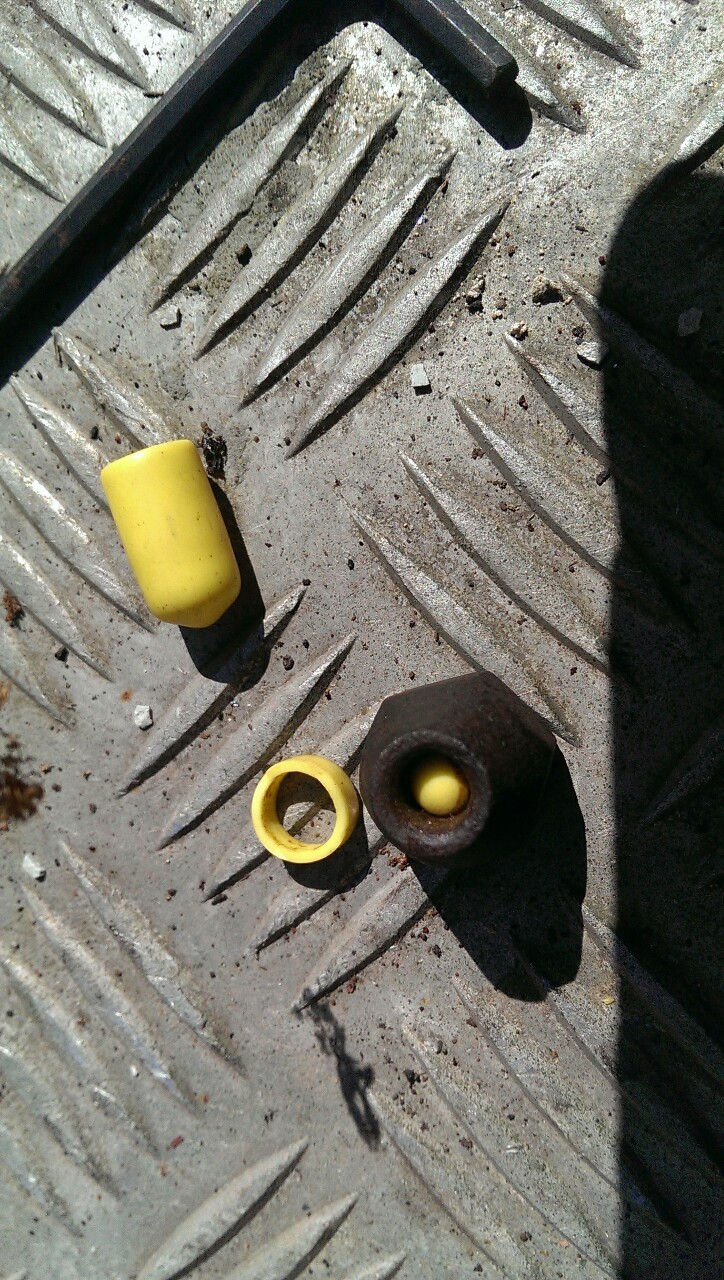
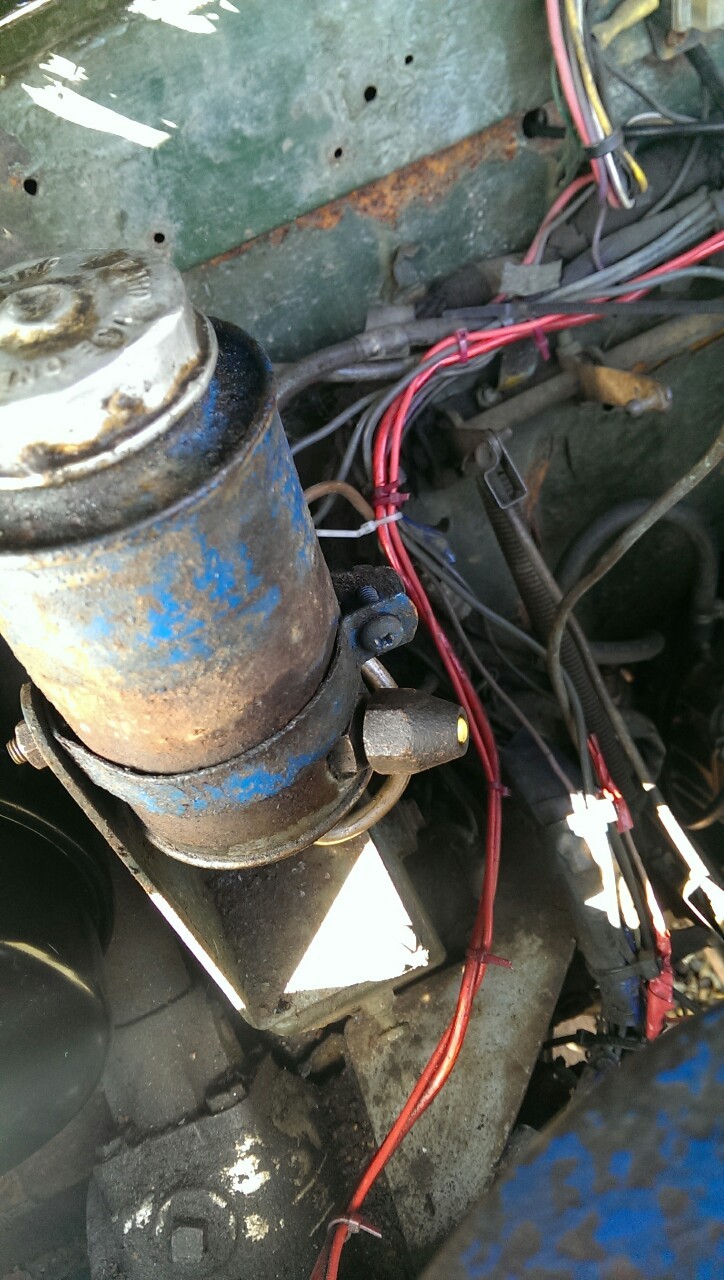


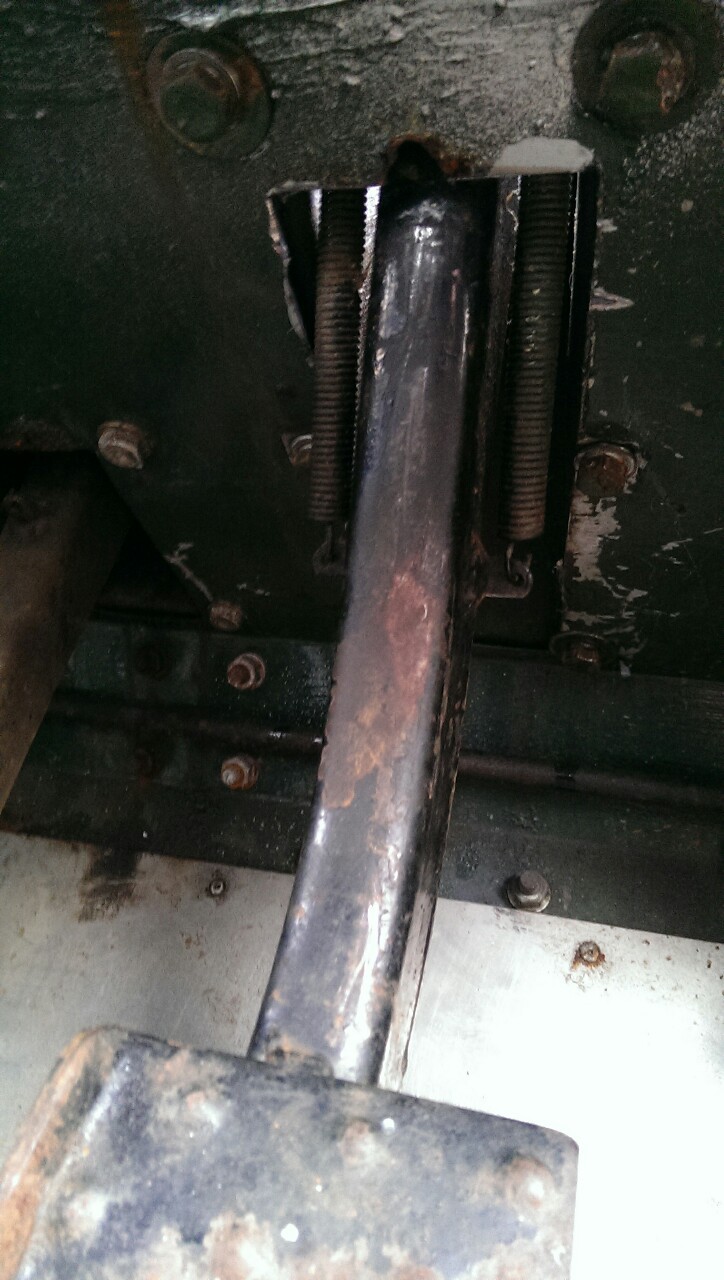
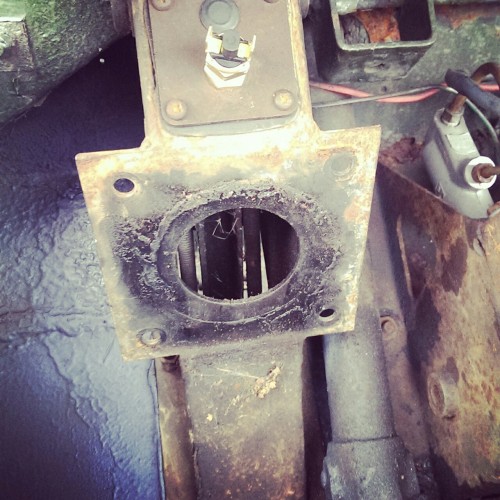

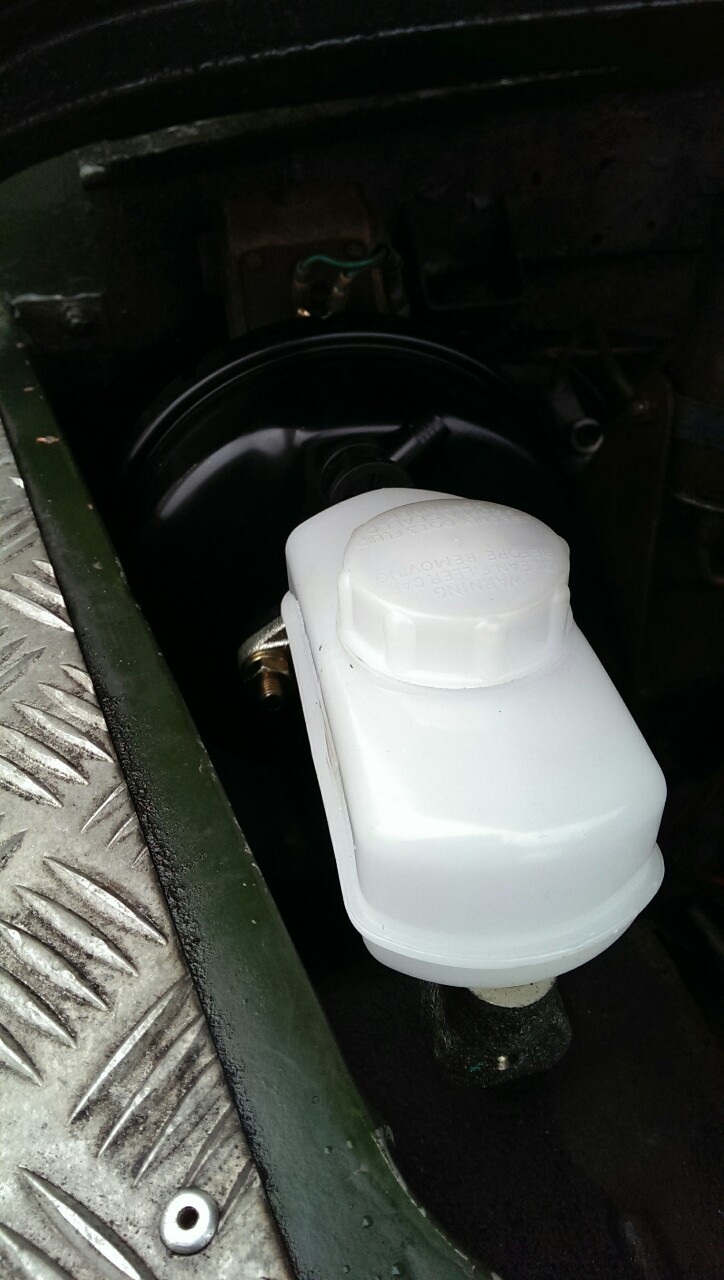


 Reply With Quote
Reply With Quote
